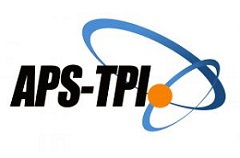The Measurement of Usability Using USE Questionnaire on the Google Classroom Application as E-learning Media (A Case study: SMK Negeri 1 Bandung)
Abstract
The Pandemic Covid-19 has changed various aspects of human life currently, especially in education. In this Covid-19 pandemic, E-learning users have been increased. Work from home policy from government generates the whole process of learning activities in SMK Negeri 1 Bandung been substituted by an online learning model. E-Learning platform that is widely used is Google Classroom. As a widely used platform, it is necessary to measure the usability of this application. Usability can be measured from the results of the percentage of eligibility obtained based on a questionnaire distributed to users, the questionnaire applied the USE questionnaire method, which contained a series of statements that have been grouped into several aspects of use, i.e., ease of use, ease of learning, satisfaction, and usefulness. The results obtained for each aspect of usability were the ease of use aspect with 80% of eligibility, the ease of learning aspect with 83% of eligibility, satisfaction with 81% of eligibility, and ease of use with 81% of eligibility. Overall the results of usability testing obtained 81% of eligibility. It means that Google Classroom application is very feasible to be used by teachers since this application is easy to use, easy to learn, useful as e - learning media.
Keywords
Full Text:
PDFReferences
Abidah, A., Hidayaatullah, H. N., Simamora, R. M., Fehabutar, D. & Mutakinati, L. (2020). The Impact of Covid-19 to Indonesian Education and Its Relation to the Philosophy of "Merdeka Belajar". Studies in Philosophy of Science and Education, 1(1), 38-49.
Asnawi, N. (2018). Pengukuran Usability Aplikasi Google Classroom Sebagai E-learning Menggunakan USE Questionnaire (Studi Kasus: Prodi Sistem Informasi UNIPMA). Journal of Computer, Information System, & Technology Management, 1(2), 17-21.
Banggur, M. D. V., Situmorang, R. & Rusmono. (2018). Pengembangan Pembelajaran Berbasis Blended Learning pada Mata Pelajaran Etimologi Multimedia. Jurnal Teknologi Pendidikan, 20 (2), 152165.
Farida, Lilis D & Sismoro, H. (2020). Perbandingan Tingkat Usability Google Classroom Berdasarkan Perspektif Teachers Pada Perguruan Tinggi. Jurnal Sistem Informasi, 9(1), 63-72.
Geisen, E. Bergstrom JR. (2017). Usability Testing for Survery Research. In Bergstrom's new book Usability Testing for Research.
Herliandry, L. D., dkk. (2020). Pembelajaran Pada Masa Pandemi Covid-19. Jurnal Teknologi Pendidikan, 65-70.
Ibrahim, D. S. & Suardiman, S. P. (2014). Pengaruh Penggunaan E-learning Terhadap Motivasi dan Prestasi Belajar Matematika Siswa SD Negeri Tahunan Yogyakarta. Jurnal Prima Edukasia.
Iftakhar, S. (2016). Google Classtoom: What Works and How? Journal of Education and Social Sciences, Vol. 3, 12-18.
Izenstark & K. L. Leahy. (2015). Google Classroom for Librarians: Features and Opportunities. Libry Hi Tech News, 32(9), 1-3.
Kasali, R. (2018). Disruption. Jakarta: PT Gramedia Pustaka Utama.
Kusuma, J. W., & Hamidah. (2020). Platform Whatsapp Group dan Webinar Zoom Dalam Pembelajaran Jarak Jauh Pada Masa Pandemik Covid-19. Jurnal Ilmiah Pendidikan Matematika, 5(1).
Kusuma, W. A., Noviasari, V. & Marthasari, G.I. . (2016). Analisis Usability dalam User Experience pada Sistem KRS Online UMM menggunakan USE Questionnaire. Jurnal Nasional Teknik Elektro dan Teknologi Informasi, 294-301.
Latif, S. (2016). Learning Engagement in Virtual Environment. J. Comput. Appl., 7-33.
Lee, B. N. (2020). Blended Learning through Google Classroom. International Journal of Education and Pedagogical Sciences, 14(4), 220-226.
Munir. (2012). Pembelajaran Jarak Jauh (2nd ed.). Bandung: Alfabeta.
Mustakim. (2020). Efektivitas Pembelajaran Daring Menggunakan Media Online Selama Pandemi Covid19 Pada Mata Pelajaran Matematika. Al asma: Journal of Islamic Education, 1-12.
Nugrahani, F. (2014). Metode Penelitian Kualitatif dalam Penelitian Pendidikan Bahasa. Surakarta.
Rahadi, D. R. (2014). Pengukuran Usability Sistem Menggunakan Use Questionnaire Pada Aplikasi Android. Jurnal Sistem Informasi, 6(1), 661-671.
Rokhani, C. T. (2020). Pengaruh Work From Home (WFH) Terhadap Kinerja Guru SD Negeri Dengkek 01 Pati Selama Masa Pandemi Covid-19. Journal of Education, Psychology and Counseling, 424 - 437.
Rusdiana, A., Sulhan, M., Arifin, I. Z., Kamludin, U. A. (2020). Penerapan Model POE2WE Berbasis Blended Learning Google Classroom Pada Pembelajaran Masa WFH Pandemic Covid-19, 1-10. 1-10.
Setiawan, D., & Mumtahana, H.A. (2018). Analisis Kebutuhan E-Learning Program Studi Sistem Informasi Universitas PGRI Madiun. Senatik, 30-36.
Sudarsana, K., Putra, M., Astawa, N. T., & Yogantara, W. L. (2019). The Use of Google Classroom in The Learning Prosess. Journal of Physics.
Sugiyono. (2013). Metode Penelitian Kuantitatif, Kualitatif, dan RnD. Bandung: Alfabeta.
Sujito, F., Arifudin, R., & Arini, F.Y. (2019). An Analysis of User Interface and User Experience Using System Usability Scale and GOMS Method, I (October), 65-73. 65-73.
Utami, R. (2019). Analisis Respon Mahasiswa terhadap Penggunaan Google Classroom pada Mata Kuliah Psikologi Pembelajaran Matematika. Prosiding Seminar Nasional Matematika, (pp. 498-502).
Wiranda, T., & Adri, M. (2019). Rancang Bangun Aplikasi Modul Pembelajaran Teknologi WAN Berbasis Android. VoteTEKNIKA (Vocational Teknik Elektronika dan Informatika, 7(4), 2302-3295.
Refbacks
- There are currently no refbacks.





.png)













